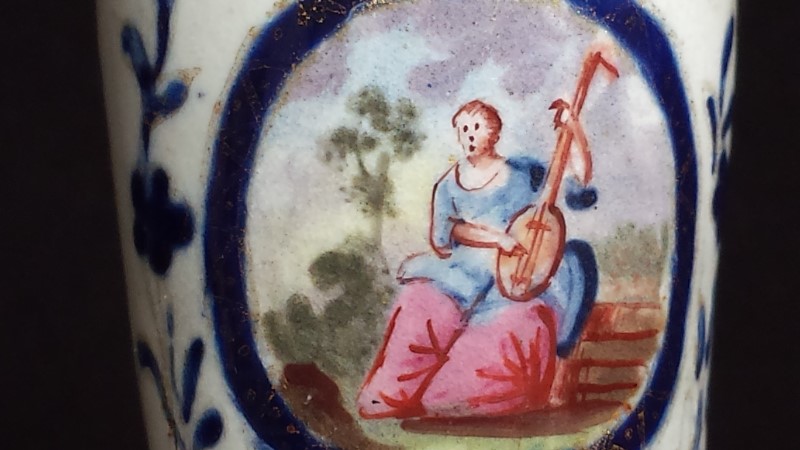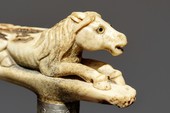|
First of all, I would like to thank the conference organizers who have given me the opportunity to talk about my favourite Cane.
Why have I chosen this as my favourite? I think because it has very vivid colours which stand out among the many other canes I have.
This English antique is almost 240 years old from a period called the ¨age of elegance¨, a period in between 1770 and 1790. It was made in the very well known The Battersea Enamel Fabric. What amazes me more is the high technical skills you need to make such an enamel.
Just a few words about enamels manufacturing:
The goal of an enamel is to remain forever bright. Its manufacturing is a matter of a careful application of chemical compounds and pigments on a metal surface. It must be placed in an oven at temperatures between 750 and 900 degrees according to the colours. At the same time, the piece should be carefully watched to avoid burning the brightness of the colours. In the old England of the 18th century enamel was considered TOP secret!!! A complicated alchemical process. This piece, in particular, is also telling a happening.
This happening is represented in only three circular cartoons of 2 cm each!!! That means 3 / 4 of an inch. Less is more…
In the first cartoon, the enamel technic is extraordinary, the artist has reached the ¨watercolour effect¨ with high skills! Here, we see a musician in an Architectural Garden (An English trend at that time) surrounded by columns, balustrades and ornaments. This musician seems to be inspired by nature, he is represented as a dreamer, playing his flute.
The artist has not only applied colours but, also delineated the most important features with a single hair brush, making a micrometric line. Here you see how with the unique and masterful touch of his brush, he gives expression to his face: while one eye is alert the other one is dreaming. His pinkie is flying on his flute.
In order to tell an affair in three images, the artist must be helped by the use of symbols. In Greek mythology a flute is the instrument of God Bacchus and his intoxications, his sound is seductive, a flute was used in Hamlin to trick the innocent children. The flute is also a very erotic symbol.
In the second cartoon, we see a lady … hah ha… there is always a lady… She is also playing her musical instrument, a lute, it is an oval instrument, her eyes are enchanted and wide open watching what the guy is doing …..
Do you see something else in this cartoon?
You see, also this lady wearing a heavy blue coat.
In the third cartoon the temperature becomes a little bit warmer, the lady removes her coat… she wears a lovely tight yellow bodice, but now… I'm not sure what type of music they are trying to play! ? Because another instrument emerge, a feminine leg appears… oh dear I don’t know what am I getting myself into.
Is it music or something more interesting?…. If you observe carefully… with so many musical instruments our playful musician kneels out of control…. he TRIES TO PLAY WITH A FOUR INSTRUMENT ! WITH HER TRIANGLE ! …sorry the triangle…. She was probably playing with, his flute? sorry… she has his flute in her hand… SORRY I mean… She raises his instrument in the air…. I don’t know if she wants to show it as a trophy ? …. I’m not sure… She is shaking his flute in the air…
What do you think is happening here?
As you have all noticed, this tells a very intriguing and naughty story, represented in a beautiful vibrant material, which requires high technical skills. It is also very quintessentially English, unfortunately many of this naughty objects were destroyed in Victorian times, and I hope that the title of this presentation HUMOUR AND PLEASURE IN WALKING CANES agrees with all what we said. And because of that, ladies and gentleman, this is my favourite cane!
|










